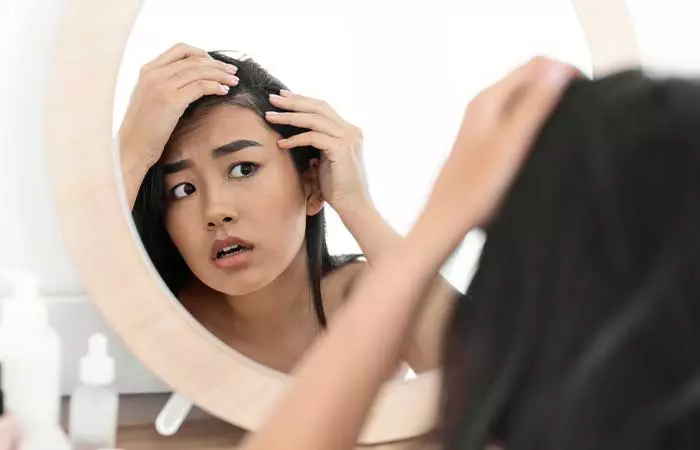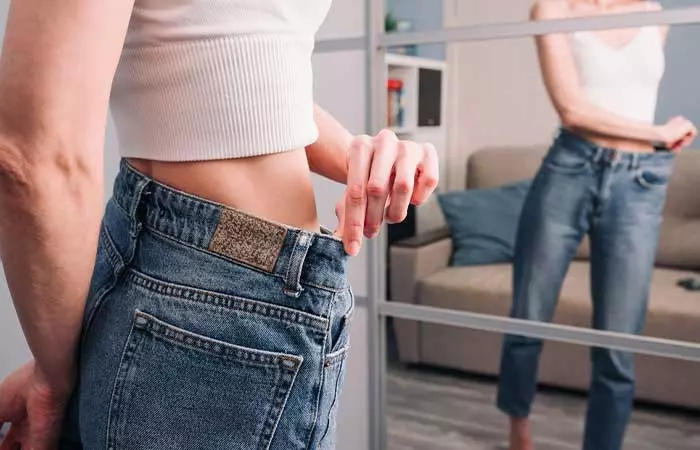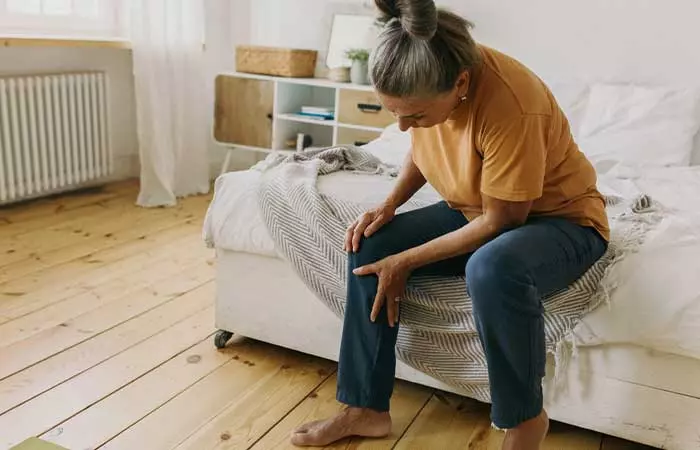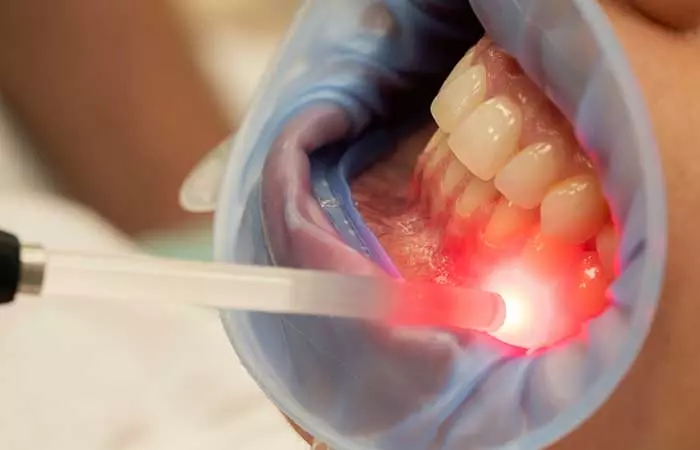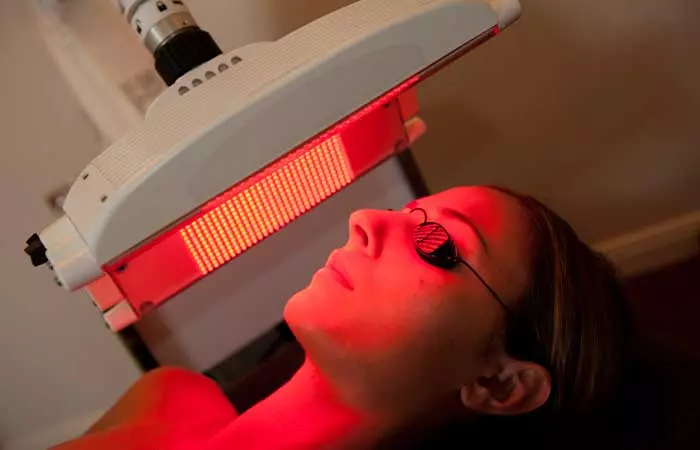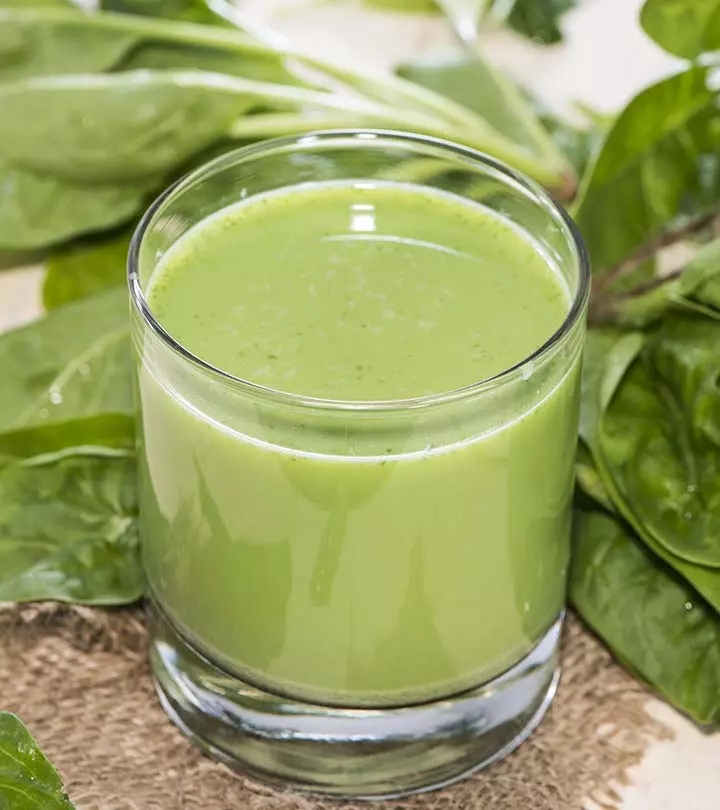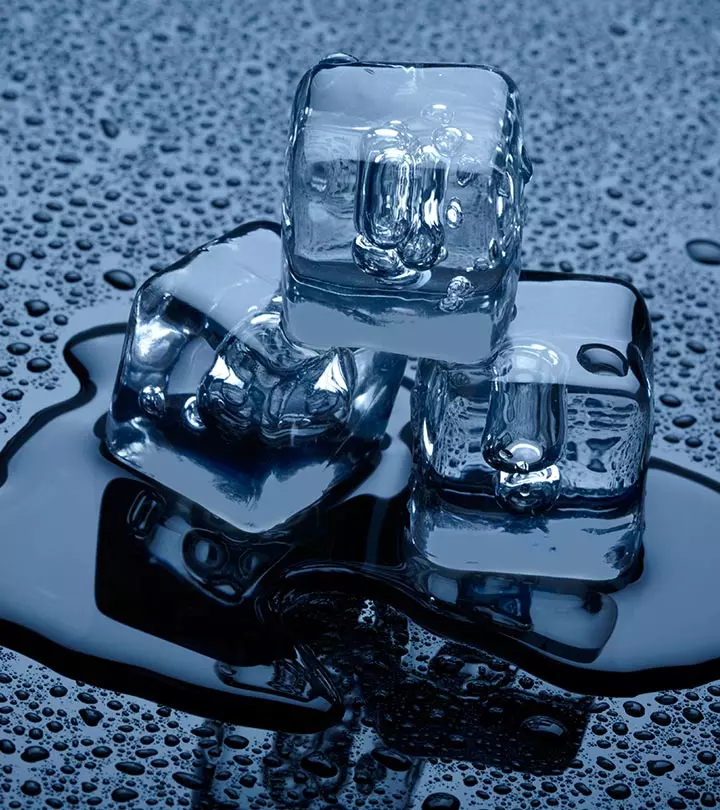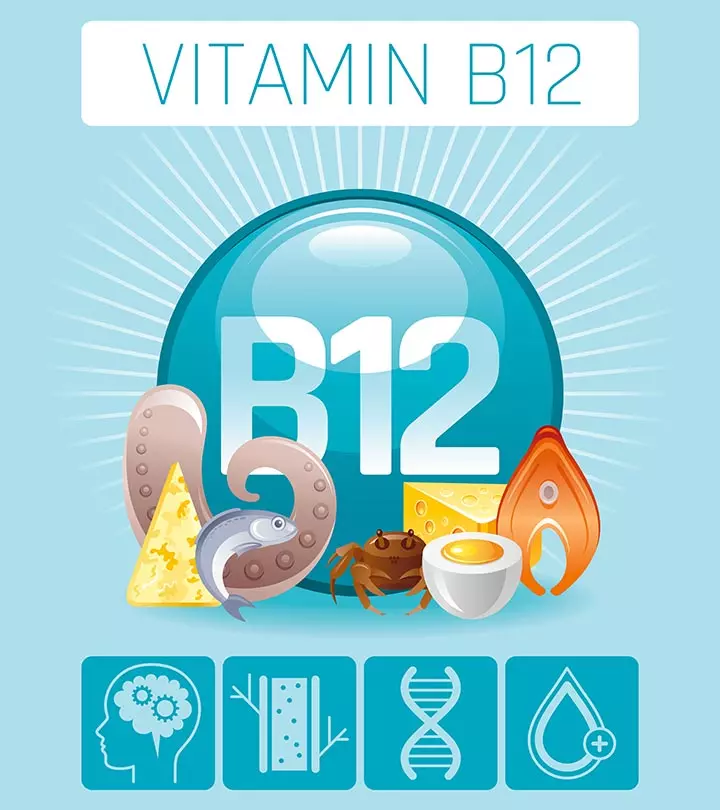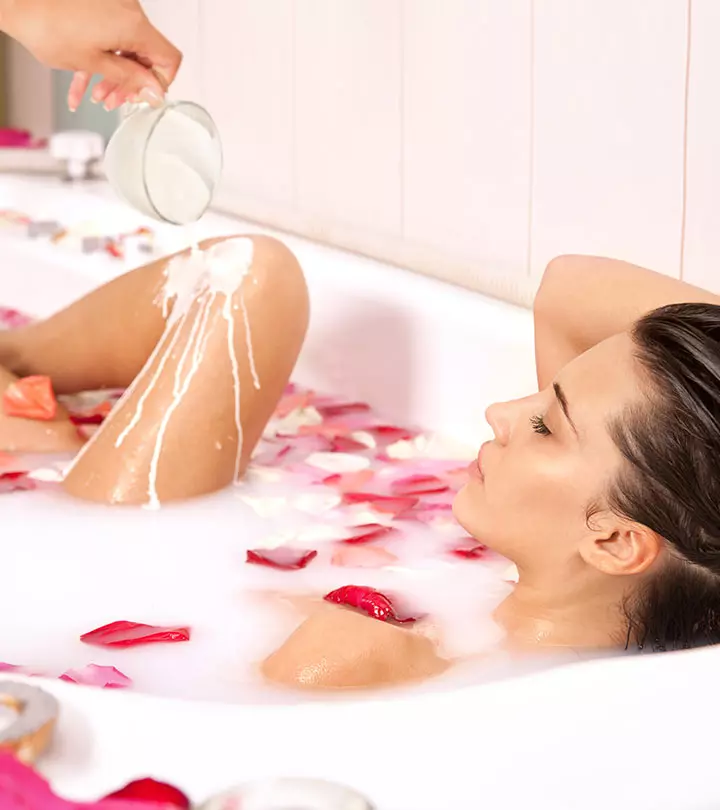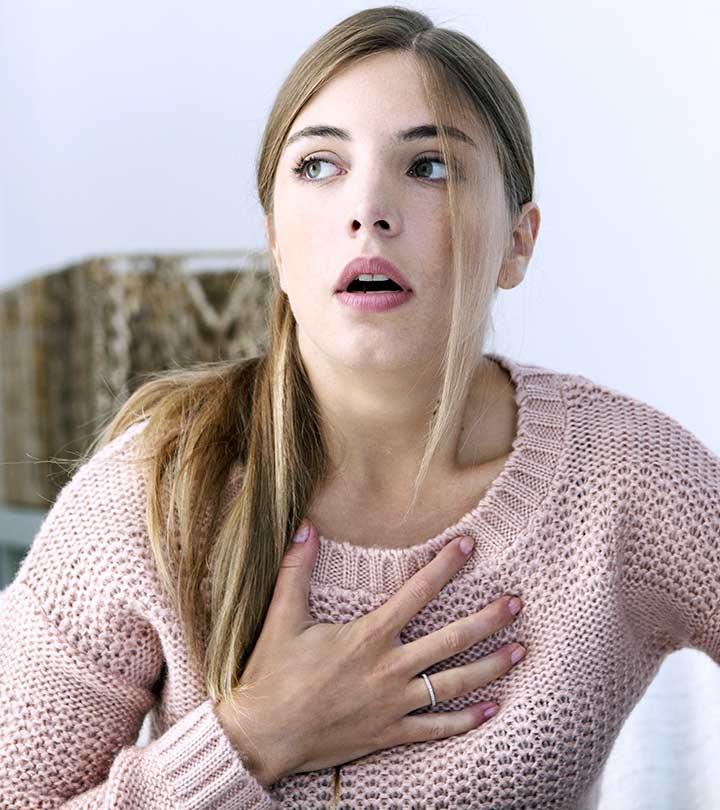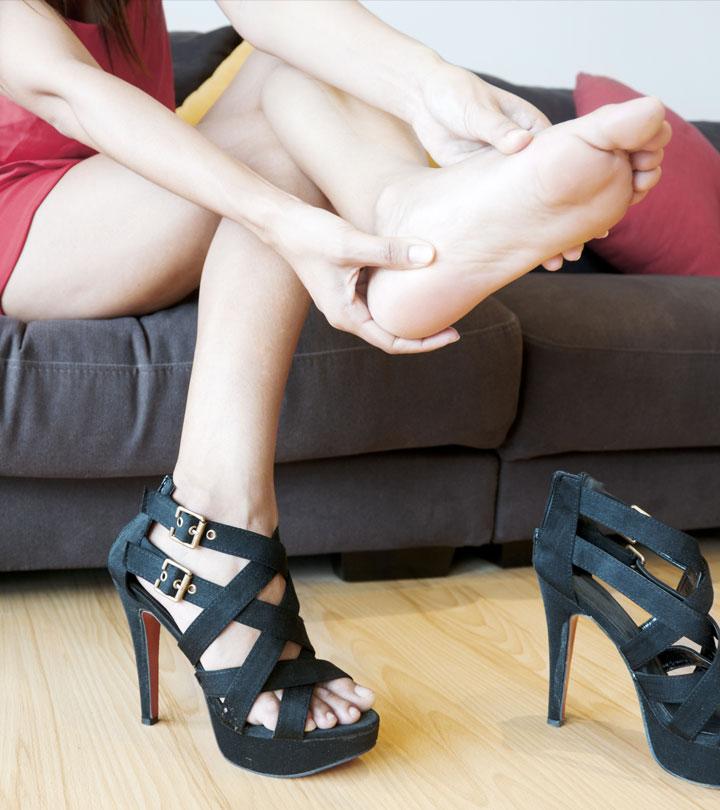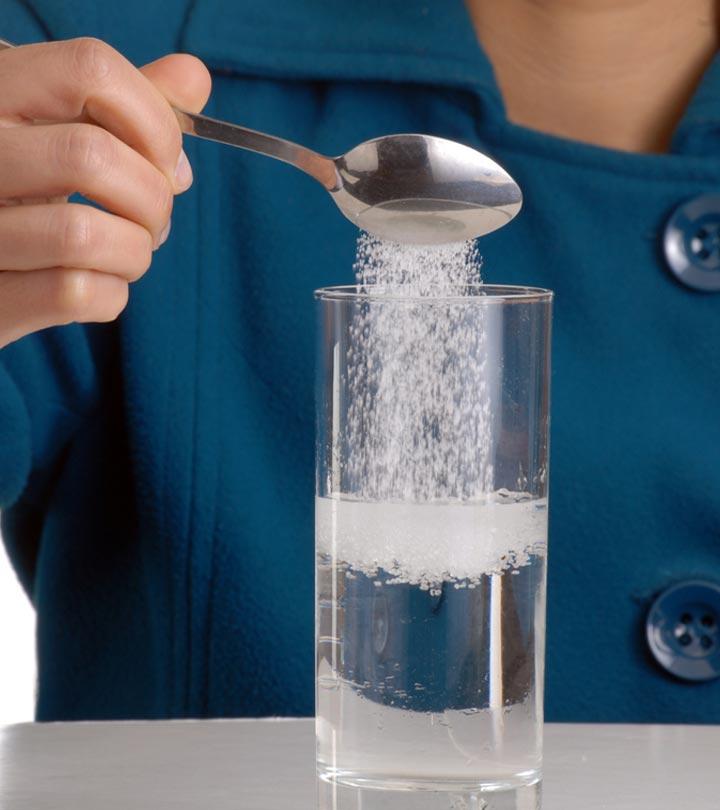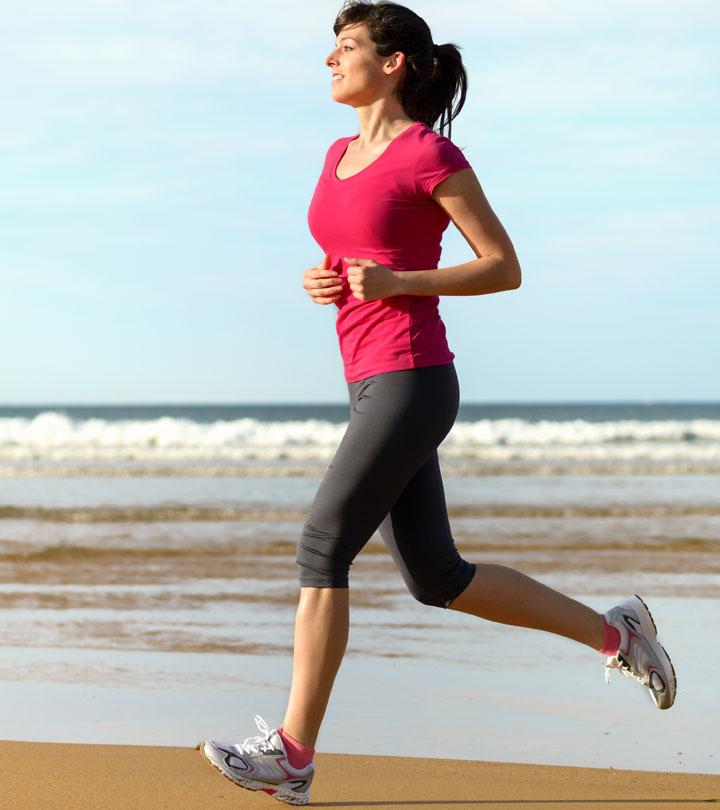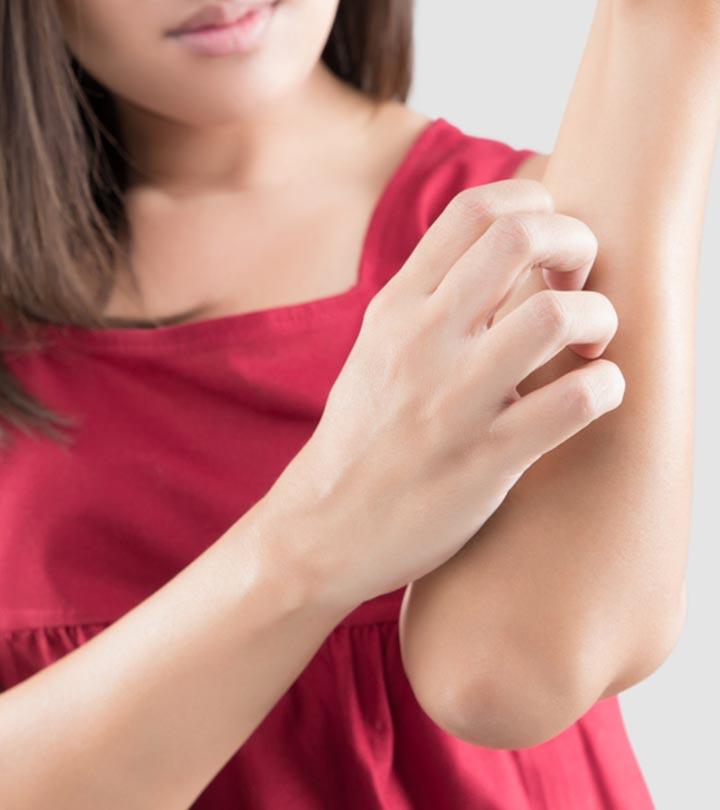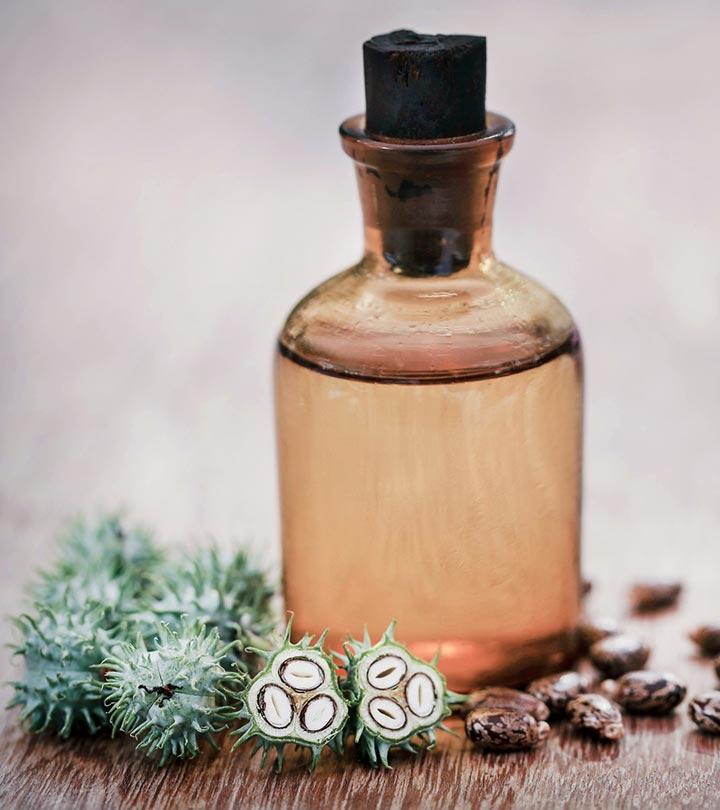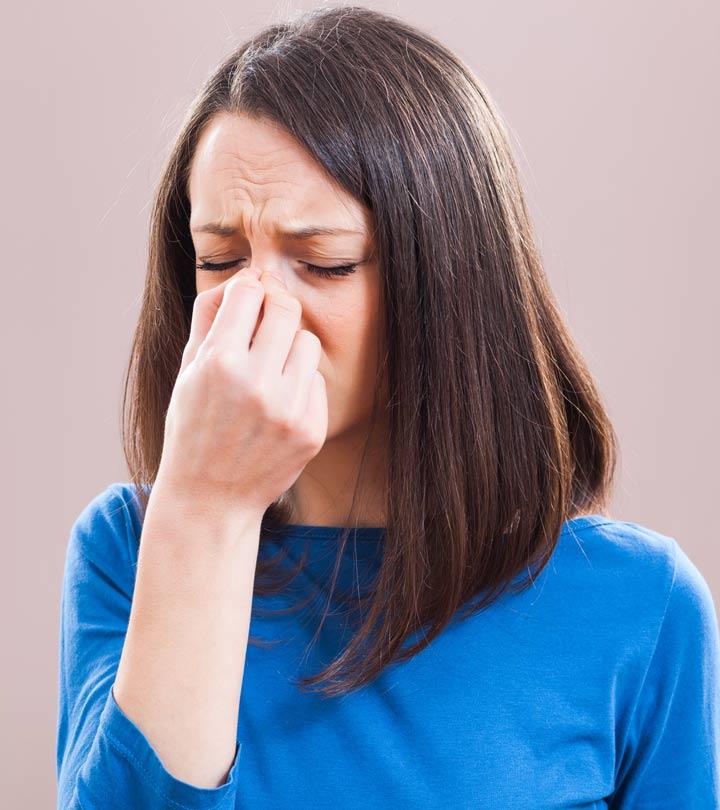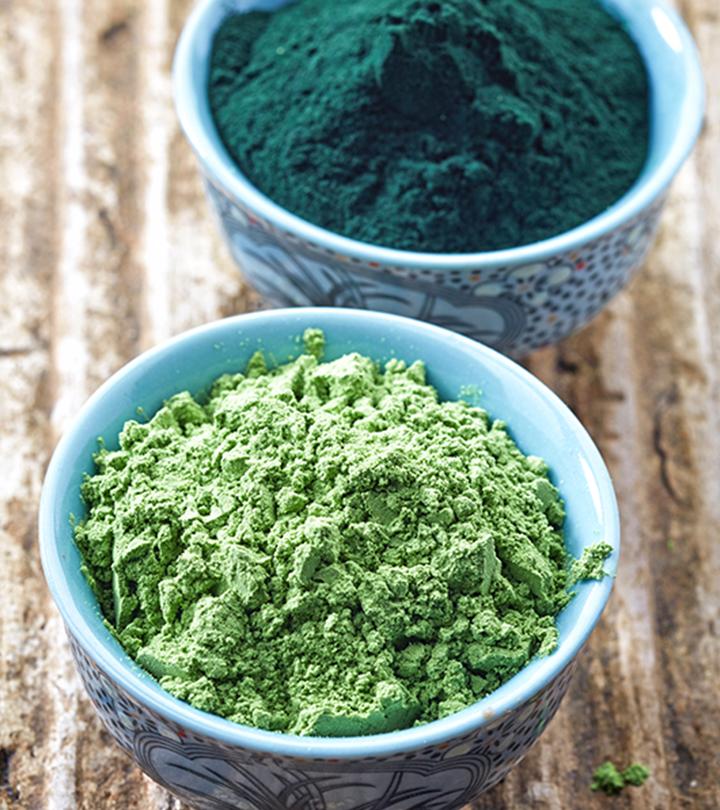12 Red Light Therapy Benefits For Skin, Hair, and Health
A light therapy to help solve your most troublesome health and beauty woes.
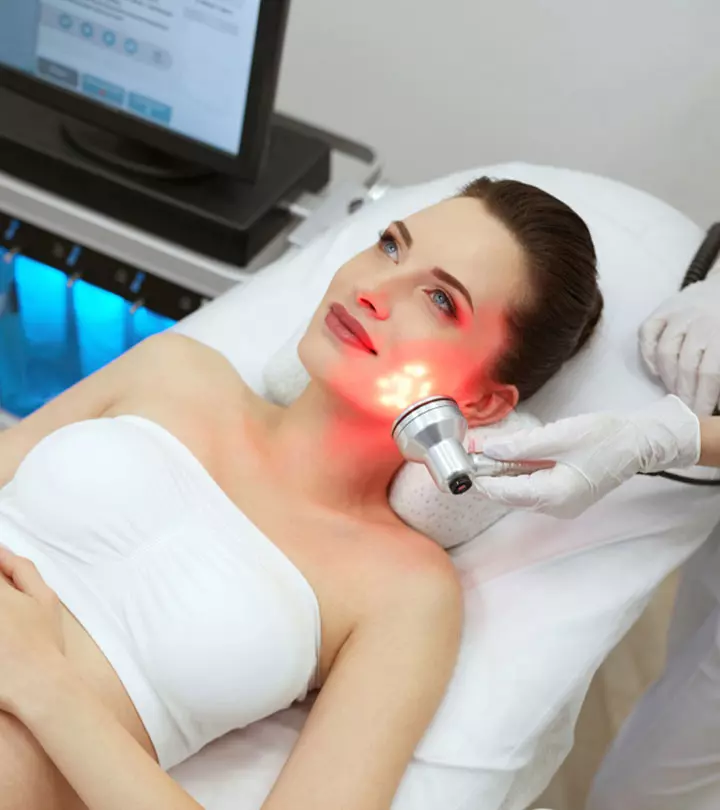
Image: Shutterstock
Choosing the ideal skin rejuvenation and pain relief therapy from the many available options can be daunting. This is where the red light therapy makes things easy for you. From improving skin laxity to treating joint pains to improving hair growth, this low-level light and laser therapy has recently become quite popular.
What makes it a preferable treatment? How does red light therapy benefit the skin? Is it possible to do it at home? Well, we have answered these questions in this article. Read on to learn more about its benefits, safety, side effects, and any precautions that you must take.
In This Article
What Is Red Light Therapy?
Red light therapy is a non-invasive treatment that uses light-emitting diodes (LEDs) that produce low-intensity light to decrease inflammation and provide pain relief (1). The low-intensity red and near-infrared light emitted by the diodes enters deep into the skin and heals it from within. Although it is a complementary therapy used alongside other conventional treatments, it might help accelerate the healing of various dermatological conditions such as wrinkles, fine lines, acne, and wounds. It is also known as low-level light therapy (LLLT) and photobiomodulation (PBM).
 Did You Know?
Did You Know?Red light therapy is also used as part of photodynamic therapyi A therapy involving light-sensitive medicine and a light source (usually from a laser) to kill abnormal or cancerous cells. where it functions as an activating agent for photosensitizing medications. Though this therapy has gained recognition from medical practitioners and therapists, some people still doubt its safety.
Is Red Light Therapy Safe?
Red light therapy, if used as directed, can be safe and has a low risk of side effects. According to a controlled trial, this therapy was found to be a non-toxic, non-invasive, non-ablative, and atraumatici Any medical or surgical procedure used to improve the skin without causing injury or trauma to the tissue. that can improve the skin’s appearance and reduce the noticeability of lines and wrinkles (2).
Learning how this therapy works will help you understand more about its safety.
What Does Red Light Therapy Do?
Mitochondria, the powerhouse of the cells, absorbs red light particles. This improves the production of adenosine triphosphate (or ATP, the energy-carrying molecule) in the mitochondria. With more energy, the cells respond better and function more efficiently. This process helps improve and rejuvenate cells, repair the skin, and boost new cell growth (1).
 Trivia
TriviaFrom stimulating collagen production to reducing inflammation to blood circulation improvement, red light therapy benefits your health in many ways.
Health Benefits Of Red Light Therapy
Red Light Therapy For Skin
RLT is one of the most beneficial treatments for several skin issues, such as wrinkles and fine lines, healing burns, psoriasis, and so on.
1. Helps Treat Vitiligo
RLT can increase pigmentation by improving the production of melanocytes and reduce depigmentation by blocking autoimmunity. This makes it an effective treatment for vitiligo (3).
2. Helps Treat Acne
It positively affects the secretion of sebum by the sebaceous glands and helps shed keratinocytesi Cells present on the outermost layer of the skin that stick together and fail to shed (during acne), causing skin issues. , which heals acne faster. It also helps in inflammation reduction caused by acne (3).
3. Helps Reduce The Appearance Of Wrinkles
RLT has anti-aging effects and stimulates the production of fibroblastsi Cells that help in the formation of connective tissues and secrete collagen to form the structure of tissues. that secrete the collagen protein. Improved collagen production can regenerate the skin, improve its laxity, and reduce wrinkles (3).
4. Helps Treat Scars
The therapy reduces inflammation, increases fibroblast production, improves collagen synthesis, and helps form new blood vessels. This helps reduce the appearance of scars and accelerate wound healing (4).
5. Helps Treat Psoriasis
RLT has anti-inflammatory properties that help heal wounds and reduce the appearance of lesions. According to a preliminary study conducted with LED energy at 830 nm and 633 nm, light therapy is one of the safest and most effective solutions to improve the symptoms of psoriasis (5).
Red Light Therapy For Hair
The therapy helps stimulate epidermal stem cells in the hair follicles and propels them into the anagen phase to improve hair regeneration. According to a controlled study on both men and women, red light therapy or low-level laser therapy (which employs light on the red and near-infrared spectrum) is effective for improving hair growth and treating alopecia (6).
A blogger shares how she combated PCOS hair loss with red light therapy: “After 8 weeks, I noticed that my hair was shedding less and growing faster. After 16 weeks, I saw a significant improvement in my hair volume and quality. My hair looked fuller, shinier, and healthier. My scalp felt more hydrated and less itchy (i).”
Red Light Therapy For Weight Loss
While there is limited research on the effectiveness of red light therapy in weight loss, it is a safe and effective method to reduce fat. According to one study, RLT creates temporary pores in fat cells that help lipids (fat molecules) leak out (7). Another clinical study supports the claim that RLT can help reduce the waistline (8).
Red Light Therapy For Eyes
The red and near-infrared light can penetrate certain tissues. Our eyes rely on these for the energy required to carry out associated metabolic processes. Thus, this light may help in the treatment of optic nerve trauma, macular degenerationi An age-related eye disorder that causes loss of vision or blurred central vision due to macula damage. , retinitis pigmentosai A group of rare, genetic eye disorders where the retina is damaged and causes severe vision impairment. , and other retinal injuries (9).
Red Light Therapy For Muscles And Joints
Applying red light therapy before exercise may enhance muscle performance, helps with muscle recovery, and reduce post-workout pain and soreness (10). Red light therapy’s anti-inflammatory and pain-relieving properties also help treat degenerative knee osteoarthritisi A form of arthritis where the protective tissues at the knee joints wear down gradually and worsen over time. in elderly people and improve joint health (11).
Red Light Therapy For Dental Health
Low-level light therapy can also help kill dental plaque bacteria and improve oral health (12). According to a study, light therapy can relieve pain, improve muscle activity, and increase the range of motion in people with temporomandibular disorderi A disorder where the movement of the jaw joints and the surrounding muscles are compromised, leading to chronic facial pain. (13).
Red Light Therapy For Cardiovascular Health
A heart attack or stroke may leave scarring on the heart, which results in the thinning of its walls and a reduced blood pumping rate. While the heart cannot fully heal on its own, red light therapy can be an effective solution to treat such cases. The laser-treated bone marrow stem cells help restore heart function and overall health. A study conducted in 2011 found that using this therapy on heart cells shortly after an attack can reduce scarring by up to 80%. Red and near-infrared light therapy boosts mitochondria oxygenation and increases ATP production (the body’s energy source). When the mitochondria are energized, the cells produce more energy, promoting faster healing, better stress resistance, and improved performance (14).
Red Light Therapy For Treating Side Effects Of Cancer
Oral mucositis is a common side effect of cancer treatments where the person experiences pain, sores, infection, and bleeding inside the mouth. A study to determine its effectiveness has proved that low-level laser therapy can treat oral mucositis and other skin toxicities associated with cancer treatment (15).
While red light therapy seems to have many applications, you also need to consider its side effects before going for it.
Red Light Therapy For Seasonal Affective Disorder (SAD) Treatment
Seasonal affective disorder (SAD) is depression that manifests during seasons when there is less sunlight, like the fall and winter months. One potential treatment for SAD is red light therapy, which involves exposure to red light wavelengths to help regulate circadian rhythms and help with mood enhancement. Research has suggested that when participants with SAD were exposed to red light, they showed significant sleep improvement and progress in their symptoms (16)
Red Light Therapy Side Effects
RLT is not associated with any side effects. However, the long-term safety of certain devices that people use at home to avail the treatment is not yet known. Broken wires, device corrosion, and low-quality devices may cause damage to the skin or eyes and lead to burns. One can also experience side effects if they do not stick to the therapy as prescribed or do it too often and incorrectly.
Although you can use at-home RLT devices, it is best to consult a trained medical provider for optimal results.
In the following section, we will look at the safest way you can undergo this therapy.
How To Take Red Light Therapy
You can opt for therapy based either in a medical office or at home. The former may require you to lie in a full-body LED red light bed or pod or be treated with a handheld device or LED panels of red lights for a specific amount of time. The health care provider will point the light device at specific parts of your body that need improvement or where you feel pain.
But should you prefer doing it at home, you may use FDA-approved devices that are available online (after consulting with your doctor). While the prices may vary, always use high-quality devices that have detailed instructions on how to use them. Carefully follow the instructions to avoid complications.
Salons, beauty spas, gyms, tanning salons, saunas, and wellness centers also provide RLT. However, be cautious about where you take the treatment as they may or may not be safe. Check with your doctor to determine what suits you best.
While RLT seems beneficial, not everyone can opt for it. Read on to know who cannot use red light therapy.
Who Should Not Use Red Light Therapy
Although there is no scientific evidence to claim that it cannot be recommended to anyone, practicing caution is recommended. Anecdotal evidence suggests that people with the following complications must consult with their doctor before undergoing this therapy:
- Sensitive skin
- Diabetes
- Light sensitivity
- Recent burns or cuts
- Fever or infection
- Pregnancy
Safety Precautions
- Do not apply it to the skin longer than the suggested time.
- Wear protective spectacles for safety.
- Do not aim laser beams into the eyes unnecessarily.
- Always discuss with your doctor before undergoing the treatment.
- Use only FDA-approved at-home devices.
- Keep the device at a distance as mentioned in the instructions.
Follow these above-mentioned precautions for a safer and smoother experience with the treatment. You may also choose similar treatments to relieve pain and improve the appearance of your skin.
Other Therapies Similar To Red Light Therapy
Some other treatments similar to red light therapy that employ colored lights and wavelengths are as follows:
- Sauna light therapy
- Natural sunlight therapy
- Blue or green light therapy
- Psoralen and UV light A therapy
- Ultraviolet light B therapy
- Laser treatments
Infographic: Top 5 Cosmetic Benefits Of Red Light Therapy
Red light therapy has recently gained popularity among skincare enthusiasts as an effective method for skin issues like wrinkles, psoriasis, and acne treatment. You can opt for this procedure without worry as it is non-invasive, safe, and effective. Take a look at the infographic below to learn about its top 5 cosmetic benefits.

Illustration: StyleCraze Design Team
Conclusion
Red light therapy is a low-level light therapy that helps decrease inflammation and provides pain relief. It is a non-invasive, painless treatment that uses LEDs to treat several ailments, including scars, vitiligo, psoriasis, wrinkles, acne, oral mucositis, plaque bacteria, hair loss, eye diseases, and arthritis. Although you can do this treatment from the comfort of your home, it is always best to consult with an experienced health care provider to reduce the risk of burns or side effects.
Frequently Asked Questions
How often should I do red light therapy?
Since it is not a one-time treatment, one may have to attend sessions 2-3 times a week for a few weeks or months to treat most skin conditions. The number of sessions depends on the condition you want to treat and its intensity. A doctor can help determine the number of treatments based on the severity of the issue.
Can you overdo red light therapy?
While there isn’t enough evidence to support this claim, it is argued that overdoing it may cause skin damage. Hence, it’s advisable to avoid doing it more often than recommended.
Do you need lotion for red light therapy?
No, there is no need for any lotion or cream for red light therapy. However, if you want to apply some after the therapy, you may consult with your doctor. But do not apply anything before the therapy as it may affect its results.
What is the difference between red light therapy and infrared light therapy?
Red light is visible, while infrared light is not. The main difference is that the former is only effective on the surface of the skin, whereas the latter can be effective both on the surface of the skin as well as underneath it.
Key Takeaways
- Red light therapy uses low-intensity light to treat inflammation and reduce pain.
- It can help treat several conditions, such as acne, psoriasis, scars, hair loss, eye disease, dental decay, and the side effects of cancer treatment.
- You can either visit a medical professional to do this treatment or employ use-at-home devices.
- People with diabetes, recent burns, and pregnancy should consult with a doctor before undertaking this procedure.
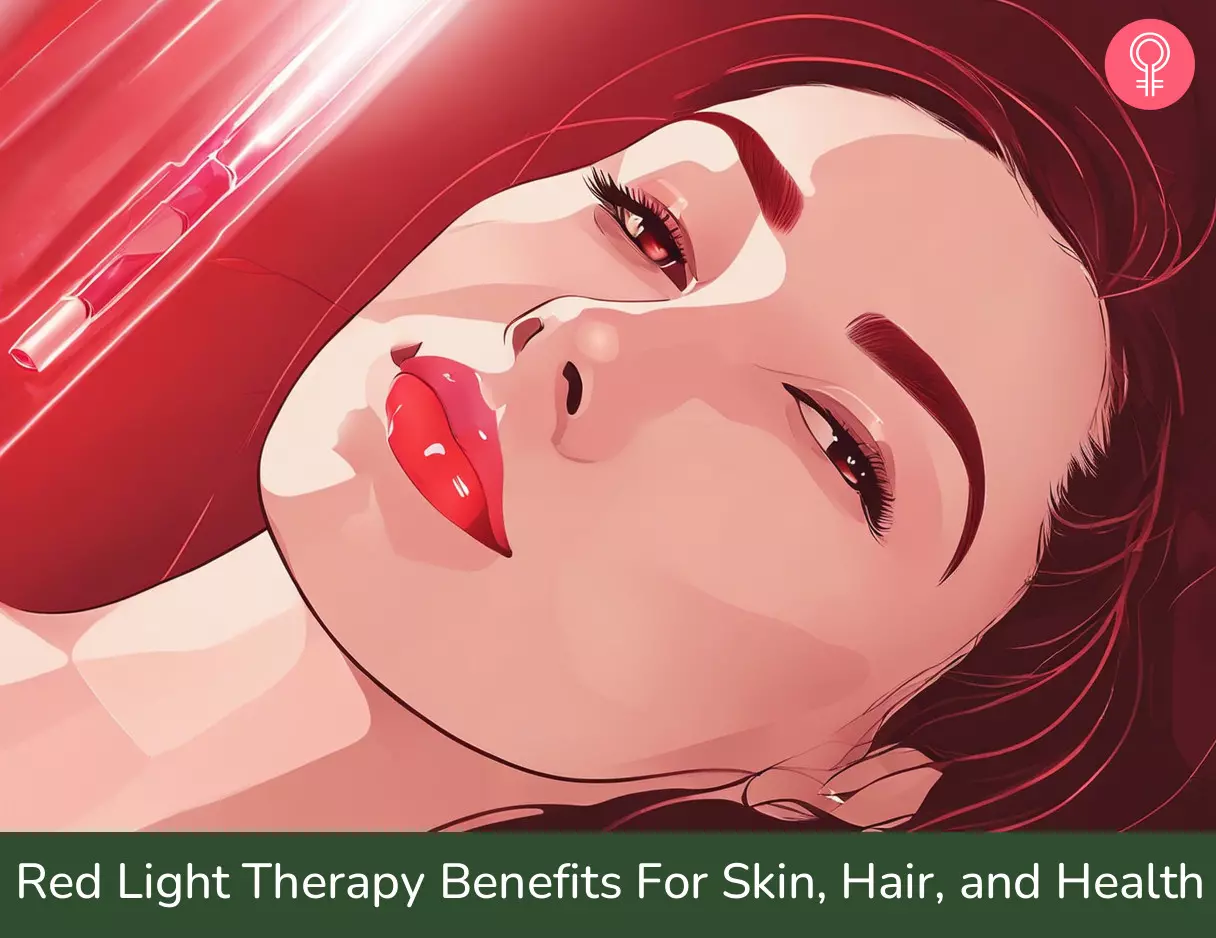
Image: Stable Diffusion/StyleCraze Design Team
Red light therapy can improve your skin health in various ways. Check out this video for a detailed understanding of this procedure from an expert before trying it.
Personal Experience: Source
StyleCraze's articles are interwoven with authentic personal narratives that provide depth and resonance to our content. Below are the sources of the personal accounts referenced in this article.
i. How I Reversed My PCOS Hair Loss Naturally With Red Light Therapyhttps://medium.com/@ppqq23718/how-i-reversed-my-pcos-hair-loss-naturally-with-red-light-therapy-2c03d0335e5e
References
Articles on StyleCraze are backed by verified information from peer-reviewed and academic research papers, reputed organizations, research institutions, and medical associations to ensure accuracy and relevance. Read our editorial policy to learn more.
- Photobiomodulation—underlying mechanism and clinical applications
https://www.ncbi.nlm.nih.gov/pmc/articles/PMC7356229/ - A controlled trial to determine the efficacy of red and near-infrared light treatment in patient satisfaction
reduction of fine lines wrinkles skin roughness and intradermal collagen density increase - Low-level laser (light) therapy (LLLT) in skin: stimulating healing restoring
https://www.ncbi.nlm.nih.gov/pmc/articles/PMC4126803/ - Effects of low-power light therapy on wound healing: LASER x LED*
https://www.ncbi.nlm.nih.gov/pmc/articles/PMC4148276/ - Combination 830-nm and 633-nm light-emitting diode phototherapy shows promise in the treatment of recalcitrant psoriasis: preliminary findings
https://pubmed.ncbi.nlm.nih.gov/19764893/ - Low-level laser (light) therapy (LLLT) for treatment of hair loss
https://pubmed.ncbi.nlm.nih.gov/23970445/ - Low-level laser therapy for fat layer reduction: a comprehensive review
https://www.ncbi.nlm.nih.gov/pmc/articles/PMC3769994/ - Efficacy of low-level laser therapy for body contouring and spot fat reduction
https://pubmed.ncbi.nlm.nih.gov/20393809/ - Near Infrared (NIR) light therapy of eye diseases: a review
https://www.ncbi.nlm.nih.gov/pmc/articles/PMC7738953/ - Mechanisms and applications of the anti-inflammatory effects of photobiomodulation
https://www.ncbi.nlm.nih.gov/pmc/articles/PMC5523874/ - Mechanisms and applications of the anti-inflammatory effects of photobiomodulation
https://www.ncbi.nlm.nih.gov/pmc/articles/PMC5523874/ - Polymeric nanoparticle-based photodynamic therapy for chronic periodontitis in vivo
https://www.mdpi.com/1422-0067/17/5/769 - Photobiomodulation with simultaneous use of red and infrared light emitting diodes in the treatment of temporomandibular disorder: study protocol for a randomized controlled and double-blind clinical trial
https://journals.lww.com/md-journal/Fulltext/2019/02080/Photobiomodulation_with_simultaneous_use_of_red.62.aspx - Induction of autologous mesenchymal stem cells in the bone marrow by low-level laser therapy has profound beneficial effects on the infarcted rat heart
https://onlinelibrary.wiley.com/doi/10.1002/lsm.21063 - Low-level laser therapy: a standard of supportive care for cancer therapy-induced oral mucositis in head and neck cancer patients?
https://www.ncbi.nlm.nih.gov/pmc/articles/PMC3882349/ - Improvement in Depression Scores After 1 Hour of Light Therapy Treatment in Patients With Seasonal Affective Disorder
https://www.ncbi.nlm.nih.gov/pmc/articles/PMC5336550/
Read full bio of Dr. Farhaad Riyaz
Read full bio of Ravi Teja Tadimalla
Read full bio of Moksha Gandhi





